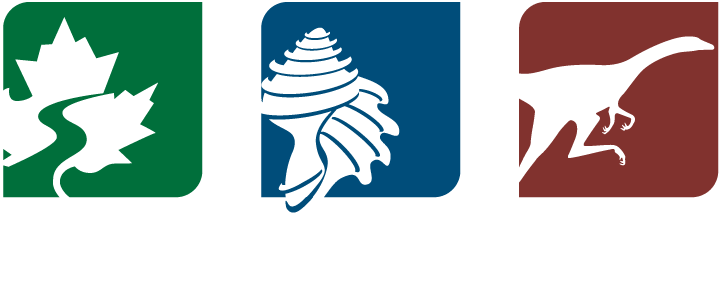Credits: Most text below from Chapter 1 in Evolution & Creationism: A Very Short Guide, Second Edition by Warren D. Allmon, published in 2009 by the Paleontological Research Institution (Special Publication 35). Edits and additions for this version by Jonathan R. Hendricks (2024).
Image above: Hummingbird clearwing moth on milkweed, Tompkins County, New York. Photograph by Jonathan R. Hendricks.
Last updated February 1, 2024
Organic evolution is the theory that all living things on Earth are connected by genealogy and have changed through time, or, as Charles Darwin more eloquently put it in 1859, that all living things are results of “descent with modification.” Among all scientific ideas and theories, evolution is unique. No other concept in science has produced so much controversy, debate, and emotion outside of scientific circles, and it continues to cause heated arguments today. This situation is remarkable for several reasons. Despite statements by its critics, and widespread misunderstanding by the general public to the contrary, there is no debate among credible scientists about whether evolution is true and a fully adequate explanation for what we observe about the history, order, and diversity of life on Earth, and there has been no serious debate about this issue among credible scientists for more than a century. This doesn’t guarantee that evolution is actually true. It simply means that the vast majority of scientists accept that it is.
Evolution, indeed, is the central idea in modern biology. This means that it is the fundamental explanatory and theoretical underpinning that unites all aspects and subfields of biological science. Playing a similar role to atomic theory in physics and chemistry, or plate tectonics in geology, evolution is the basic modern scientific hypothesis for why living things are the way they are.
Furthermore, modern Western society beyond science has, to a remarkable degree, been shaped by this widespread scientific agreement. We largely take for granted, for example, that the world and everything in it have histories and change constantly. The scientific worldview of modern society is in part a product of the widespread acceptance of Darwin’s theory of evolution by scientists. Evolution in general, and Darwin’s particular explanation for it, have, furthermore, influenced almost all areas of the wider culture, from literature to economics to cartoons. In this sense, we all effectively live in Darwin’s world. Yet, paradoxically, the majority of the general public does not know much about evolution, and much of what they think they know they do not accept.
Why does this matter? Because evolution is as well-supported a scientific idea as any other we routinely accept as true, such as that the Earth revolves around the Sun, that matter is made of atoms, that bacteria cause disease, or that the continents move. If evolution can be universally accepted by scientists and rejected by a majority of the general public, then so might any other highly verified scientific idea, threatening the rationality and basic scientific literacy that are crucial to the economic and social welfare of modern civilization. We live in a world increasingly dependent on science and technology. If we cannot understand how science and technology work, then we cannot make wise decisions on their use.
This part of Earth@Home is under active development and new sections will be added below as they are finished. Please check back again soon for more!





